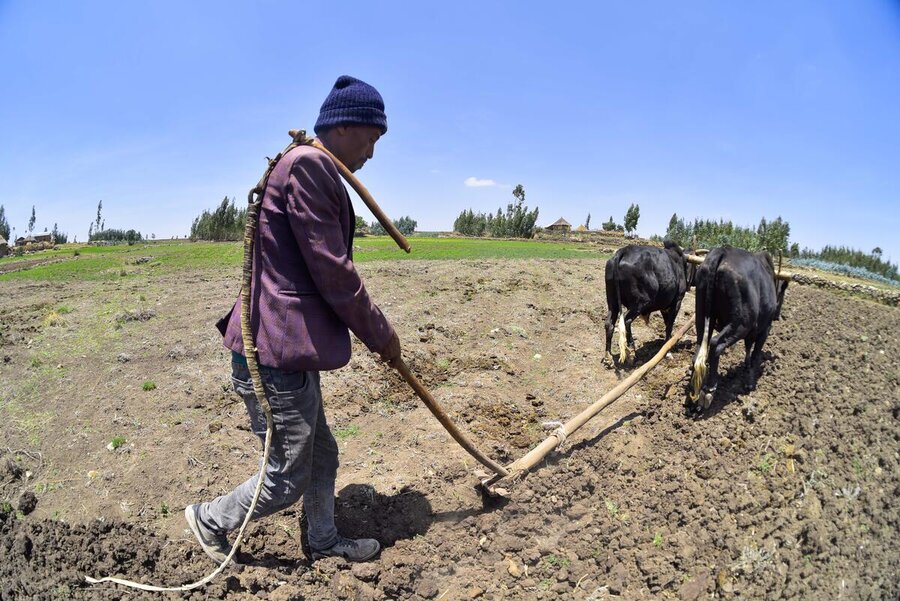
When Yohannes Negash lost half of his wheat harvest to a crop disease known locally as wag, he asked himself, "how will I have the courage to plant again?"
"I am a farmer, son of a farmer, grandson of a farmer and I could go on," he recalls jokingly today, but with a sense of pride in his voice.
For millions of Ethiopians, farming is not merely a profession; it is a way of life woven into their identity and passed through generations. But farming is a risky business in this East African country, where climate shocks, conflict and unpredictable market prices can spell disaster.
These dangers can discourage farmers from investing in improved agricultural practices, making them even more vulnerable to climate extremes and food insecurity. Ethiopia's northern Amhara region, where Negash lives, is no exception.
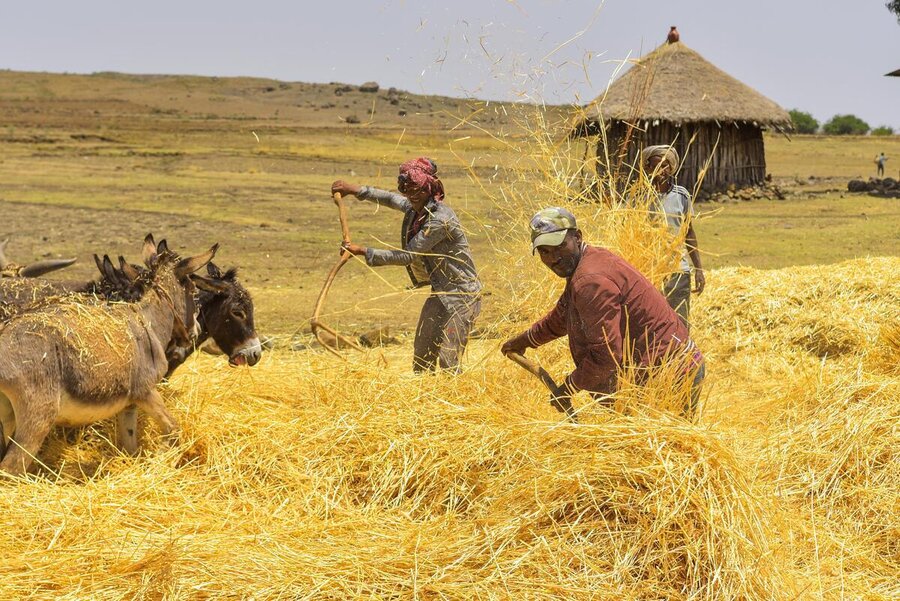
But today growers like Negash, who plants chickpeas, pulses and soya beans along with his wheat, are starting to bet on their future, thanks to an innovative crop insurance scheme supported by the World Food Programme (WFP), the Ethiopian government and nonprofit social enterprise, Pula Advisors. Launched in 2023, it insures farmers against droughts, excessive rainfall, hailstorms, pests and crop diseases.
The Amhara farmers' insurance scheme - amounting to WFP's biggest of its kind to date - is part of broader, global rural resilience initiative that WFP supports with a raft of governments and partners. It targets some 54,000 farmers in the Amhara region alone. Beyond offering insurance, the resilience effort aims to improve farming practices and incomes, for example by hiring rural workers for projects like restoring degraded lands.
"The idea is to reinforce farmers' resilience at every point in the farming process, which builds their capacity to withstand the effects of extreme weather and strengthens their food and income security," says Olipa Zulumbata, WFP programme head in the Amhara region.
Big payouts
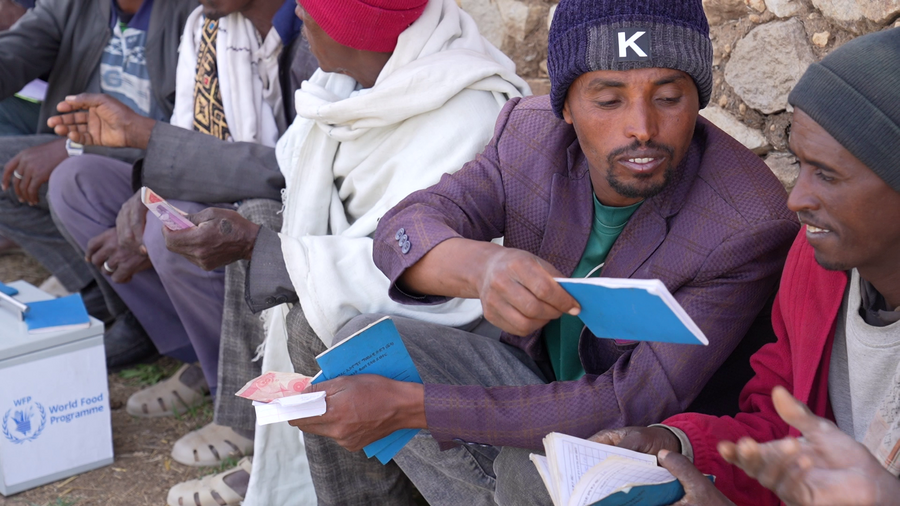
For Negash, the insurance has been a rare blessing amid a string of setbacks. Recurrent droughts, crop diseases, locust infestations, and more recently conflict have hit his region, decimating harvests and deepening hunger.
"The past couple of years have been difficult for us farmers," he says. "We had just planted when the war first came to our area (in 2021), and I was unable to gather my crops."
Last year wag disease, a fungal disease which affects cereal crops, wiped out Negash's harvest - even as conflict continued. "How can we grow if there is no peace?" he asked himself.
Negash also had misgivings about the crop insurance scheme, when he learnt about it from his village savings group. "At first, I thought it was inviting bad luck on my farm," he says. "I was very hesitant to join, but I decided to enroll after listening in various meetings."
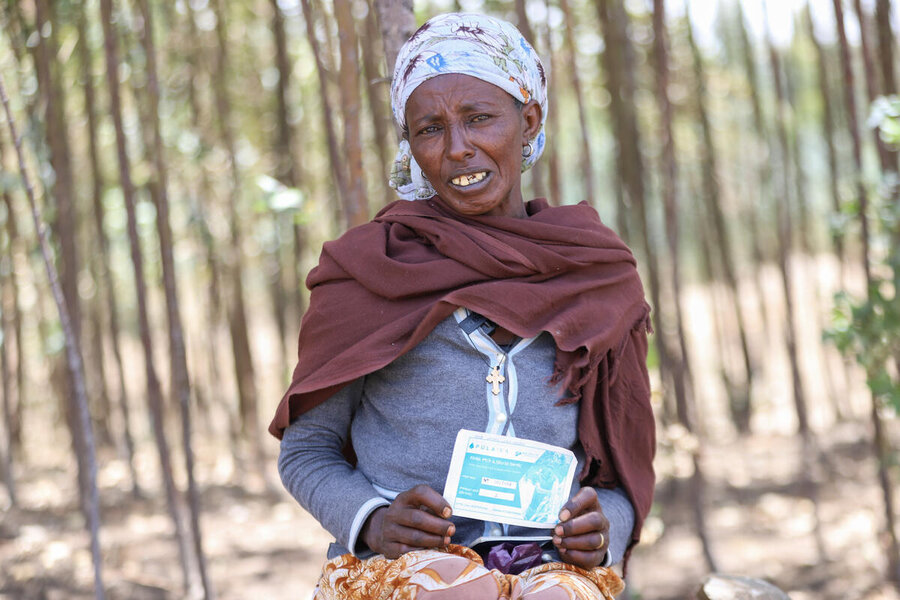
"We initially faced some challenges with gaining acceptance," says Tackle Hailu, a project coordinator with the WFP partner, Pula Advisors. "But our collaboration with WFP and other partners to sensitize communities showed great results."
This year, Negash counted among tens of thousands of farmers who received insurance payouts for their wag-destroyed harvests, totaling US$675,000 for the region.
"The biggest lesson for me from this experience is that while I cannot control the different issues that may affect my farm, I can prepare in advance," he says. "For vulnerable farmers like me, this insurance is a necessity. Just as we have health insurance for our bodies, we also need crop insurance for our farms."
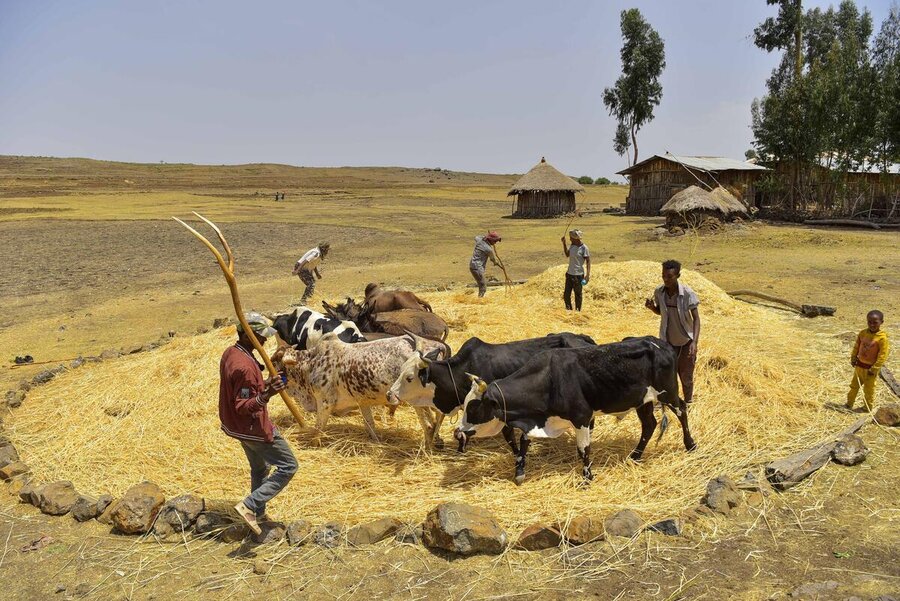
Today, Negash plans to use the insurance payout to expand his farming activities. He has also become an advocate for the scheme, encouraging other farmers in his village to join it.
"If I have a better harvest, I can ensure my children advance their education in the nearby cities," Negash says. "If they don't make it in school, I can give them money for seeds to start their own business.
"If you have the means," he adds, "anything is possible."
WFP's initiatives supporting smallholder farmers with crop insurance in Ethiopia are made possible thanks to the generous support of Kreditanstalt für Wiederaufbau (KfW), the German Development Bank.






